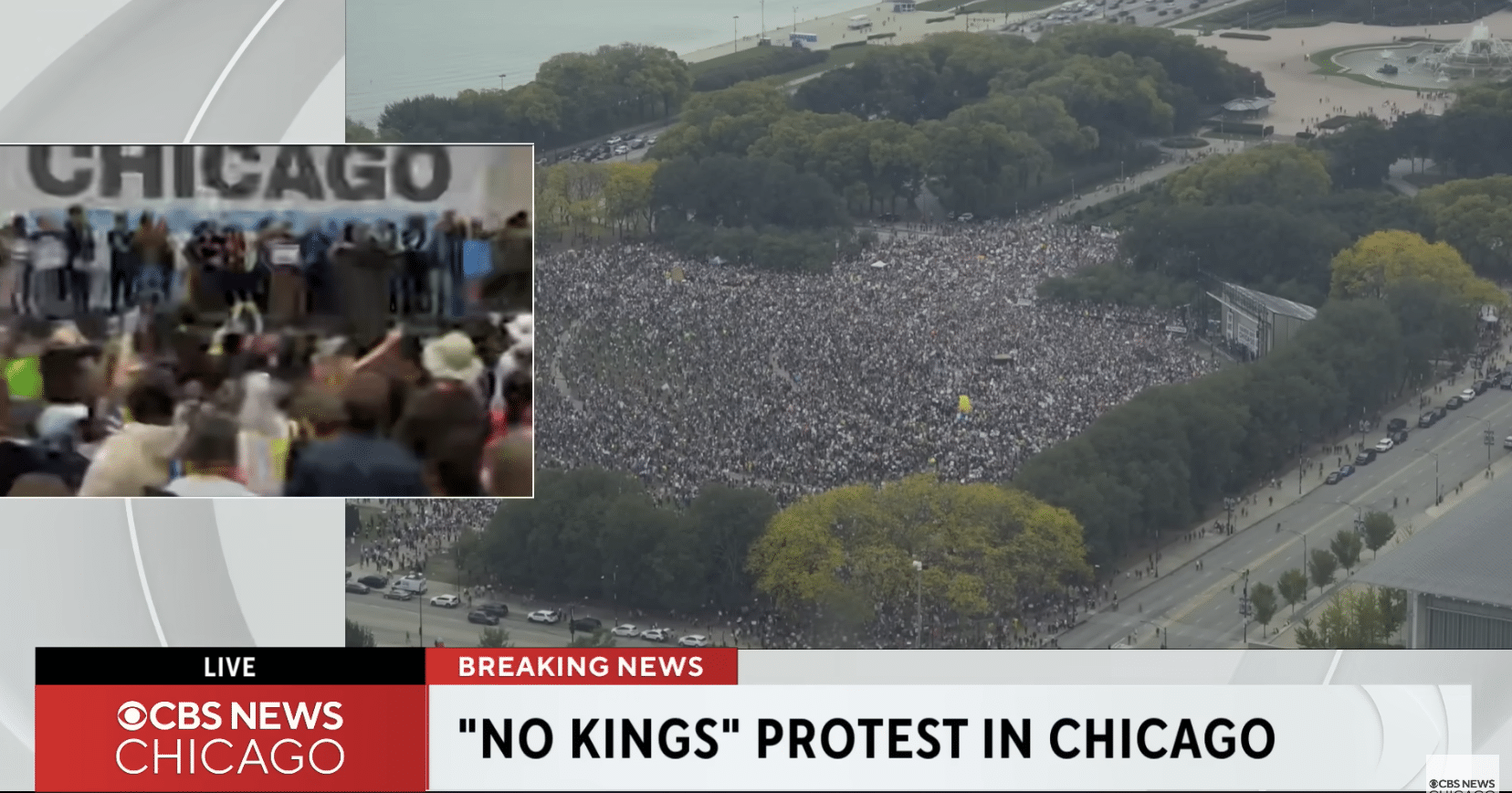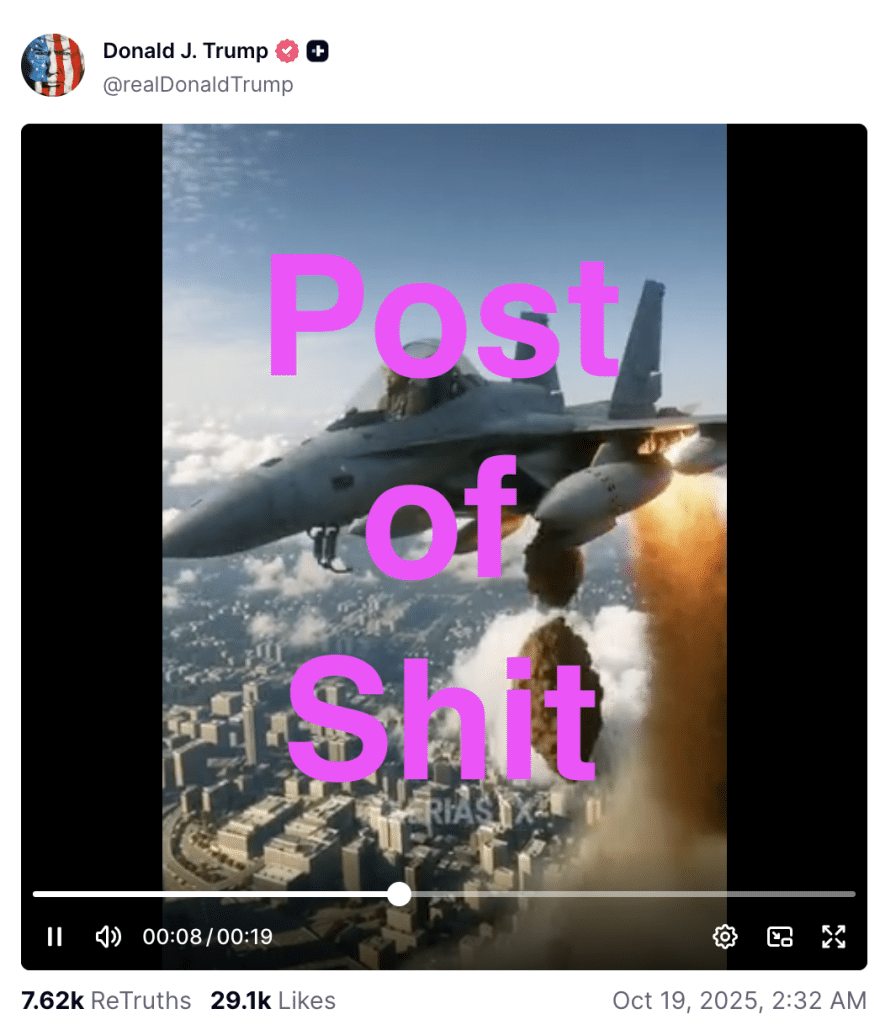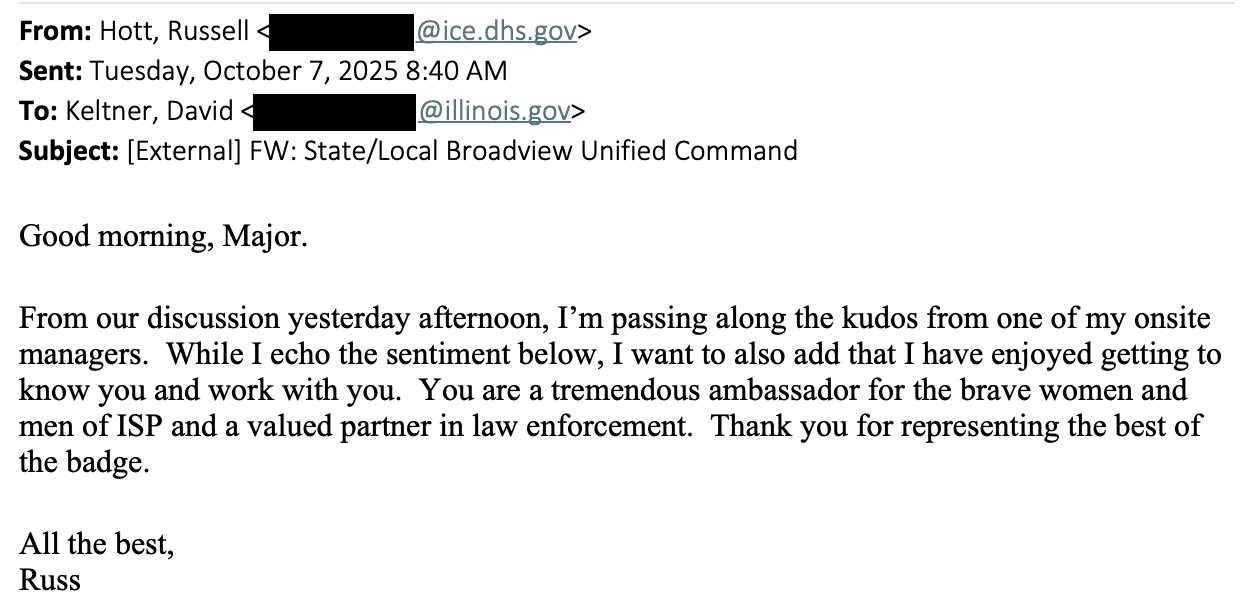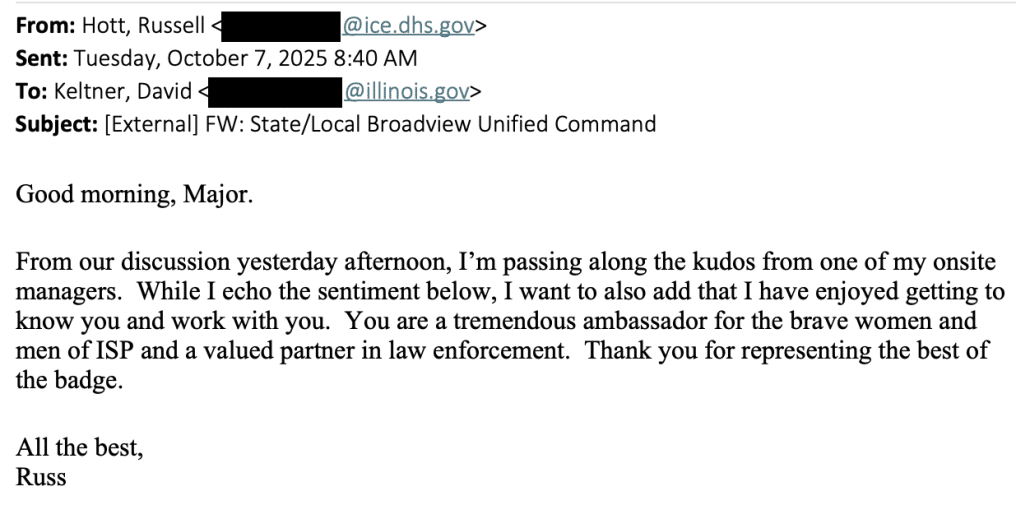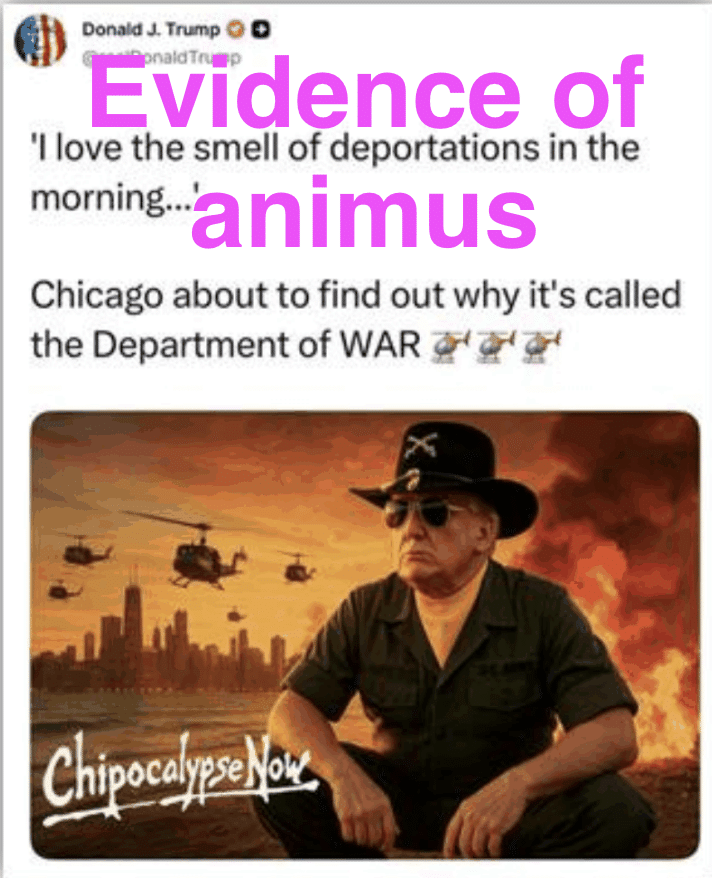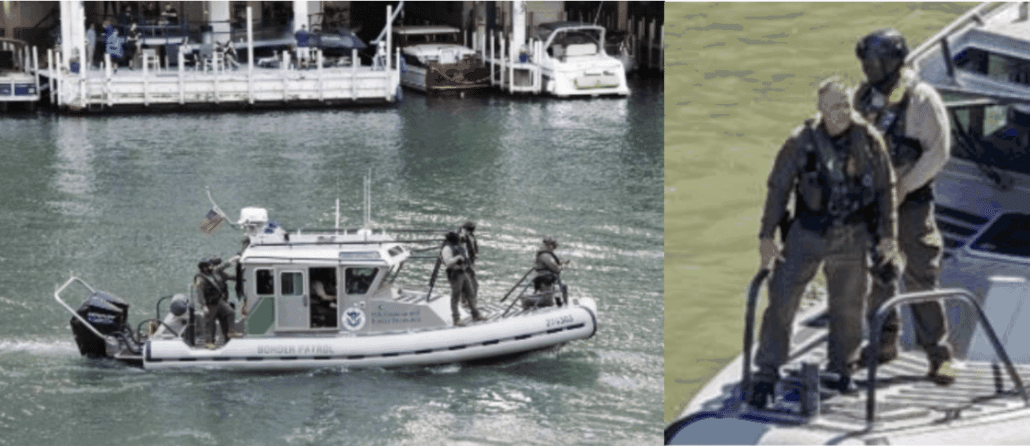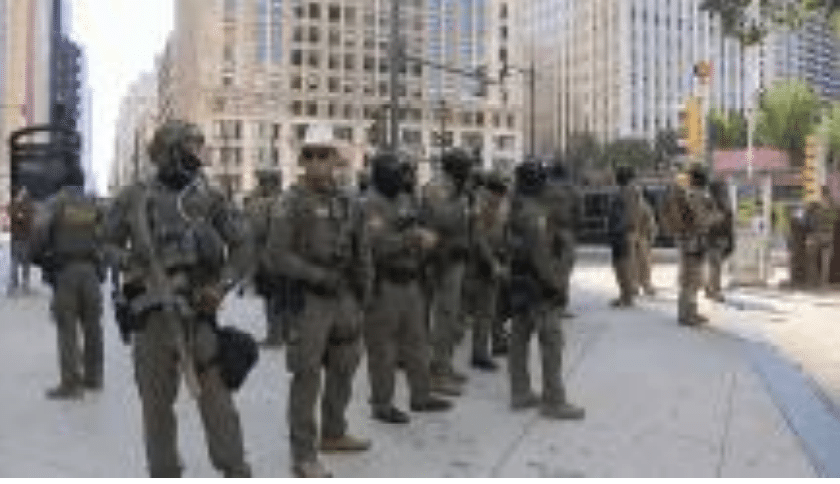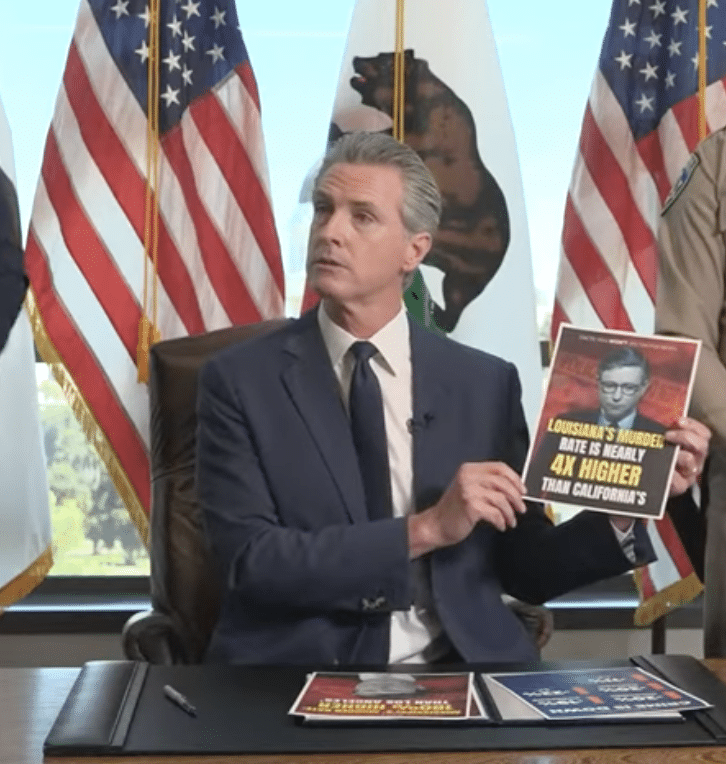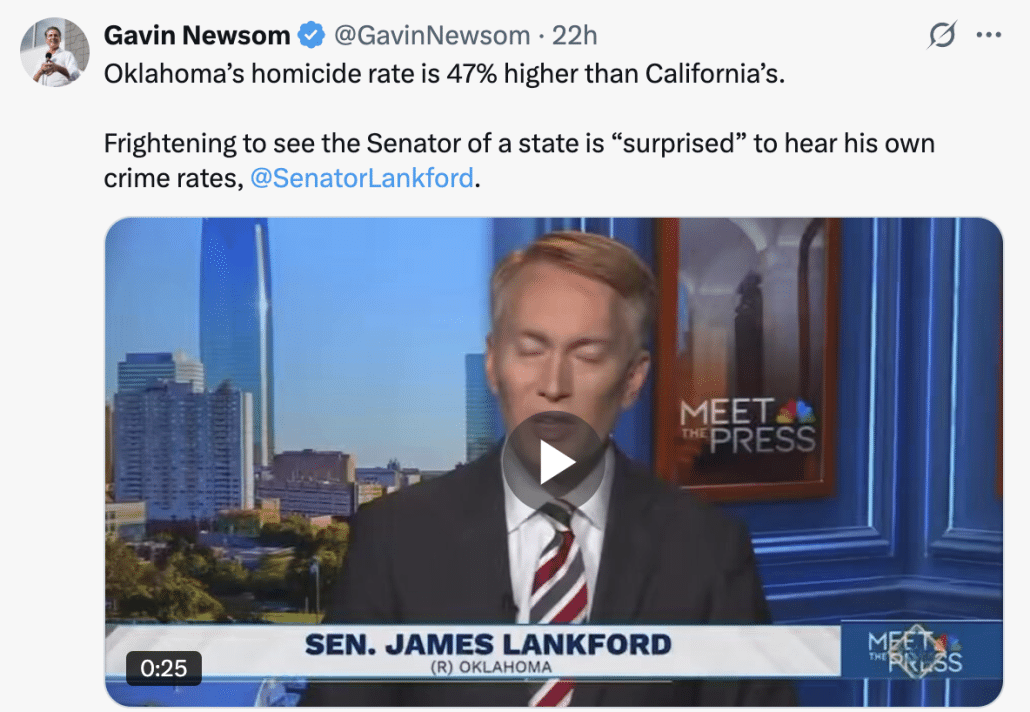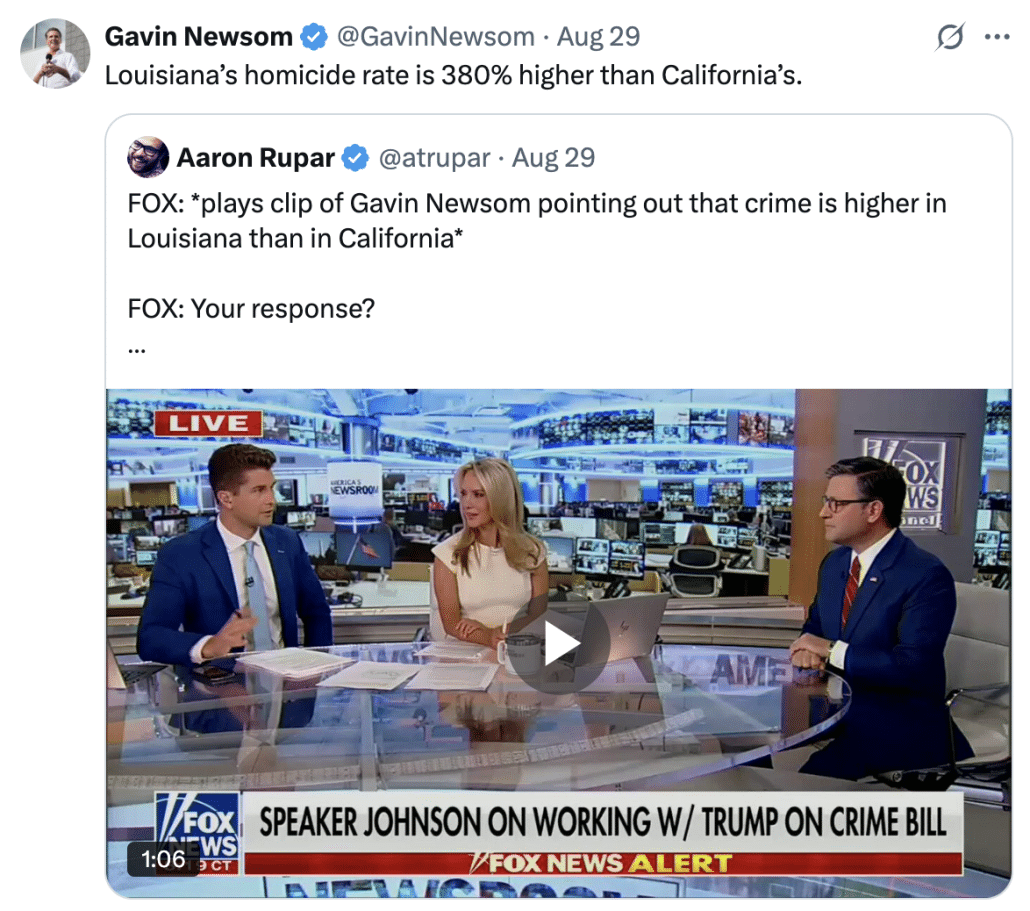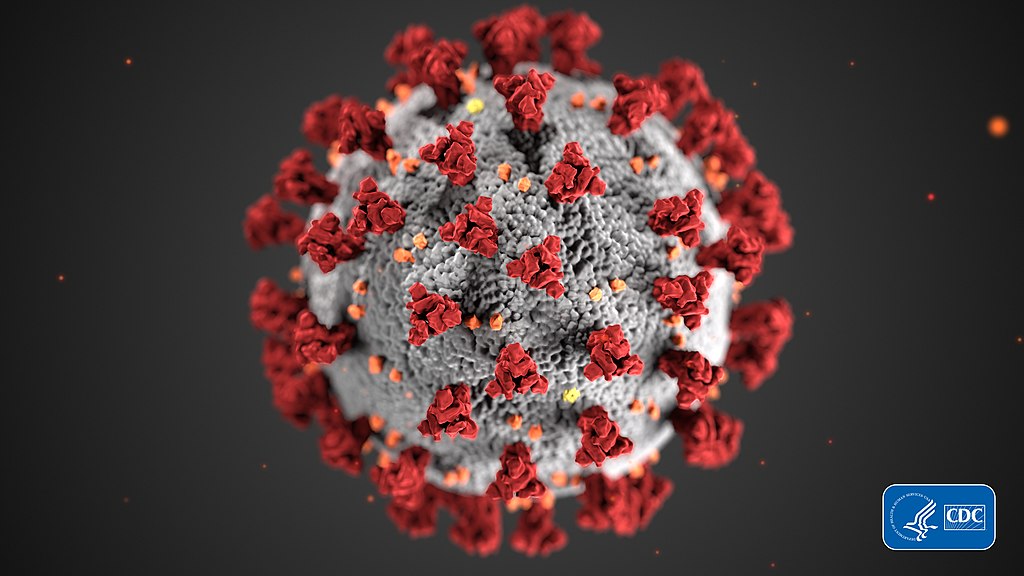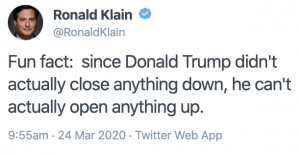Posts
Shit-Posting All the Way to SCOTUS
/29 Comments/in emptywheel /by emptywheelI was going to write about how important today’s filing in Illinois’ challenge to Trump’s invasion is.
Thankfully, Steve Vladeck did that so I don’t have to.
As for why it’s this application that presents the Court with a make-or-break moment, it’s worth reflecting on what it would mean if the full Court grants the Trump administration’s request.
First, and immediately, it will mean that the Trump administration is allowed to deploy troops onto the streets of Chicago (and Broadview) to effectively militarize the enforcement of our immigration laws. Although the application to the Supreme Court is replete with references to protecting federal property, the federal government doesn’t need the authorities that are currently blocked to do that; it can use regular troops, almost certainly without invoking 10 U.S.C. § 12406 or any other statute. (This is the “protective” power.) The power the Trump administration is seeking here is much broader—and would almost certainly mean that federalized National Guard troops would start accompanying ICE officers on immigration raids and other operations—even if they’re not making the arrests themselves. That would be a … dramatic … escalation relative to where we are today.
[snip]
Third, and most importantly, it would allow the federal government to obtain emergency relief based upon either (1) a limitless view of what it means to be “unable to execute the laws of the United States”; or (2) an incredibly one-sided factual narrative that was expressly rejected by the district judge, and that the unanimous court of appeals panel refused to disturb. The justices aren’t factfinders, and absent some “clear” reason to believe that the lower courts erred in discrediting the Trump administration’s factual claims (when, in fact, there are lots of reasons to believe that the district court was right), to grant relief in the face of those findings is to not just show stunning disrespect to both the lower courts and the appropriate standard of review; it’s to send the message that the facts just don’t matter—so long as five or more justices personally believe whatever the federal government is telling them.
That would be a big enough problem in other contexts (I’ve already written about the casual relationship Justice Kavanaugh’s Vasquez Perdomo concurrence has with the facts), but it would be utterly catastrophic here. After all, armed with a grant of emergency relief on this application, what is to stop the Trump administration from making comparably inflated and/or invented claims about the situations on the ground in other American cities as a pretextual basis for deploying troops? And what’s to stop it from making those claims not (just) tomorrow, but next November—on the eve of the midterm elections?
Having outsourced that gloomy contemplation to him, I want to point to several things that might lead SCOTUS to exercise some sanity.
First, Vladeck cited from Judge April Perry’s ruling on the lack of credibility of the affiants that the Administration submitted. But he didn’t note the paragraph following the general credibility assessment, in which Judge Perry described how the government threatened to invade the courthouse itself.
Finally, the Court notes its concern about a third declaration submitted by Defendants, in which the declarant asserted that the FPS “requested federalized National Guard personnel to support protection of the Federal District Court on Friday, October 10, 2025.” Doc. 62-3. This purported fact was incendiary and seized upon by both parties at oral argument. It was also inaccurate, as the Court noted on the record. To their credit, Defendants have since submitted a corrected declaration, and the affiant has declared that they did not make the error willfully. Doc. 65-1. All of the parties have been moving quickly to compile factual records and legal arguments, and mistakes in such a context are inevitable. That said, Defendants only presented declarations from three affiants with first-hand knowledge of events in Illinois. And, as described above, all three contain unreliable information. [links added]
Over the weekend, in response to a question about the Insurrection Act, Trump noted that one benefit (to him) of invoking it would be to shut down the courts.
This is not just a threat to the sovereignty of states. It is, explicitly, a threat to the coequal status of the courts, up to and including SCOTUS. That may make them view this threat differently.
And Trump hasn’t helped his credibility since then.
Perhaps most spectacularly, the details regarding a number of “Kavanaugh stops” have come out since Judge Perry ruled for Chicago, not least the case of a teenaged girl who was violently detained in Hoffman Estates.
A teen in Hoffman Estates was thrown to the ground by what appeared to be a federal agent this past weekend, and the teen and two of her friends were detained for hours before they were released.
Her parents spoke out Monday after they say their daughter, 18-year-old Evelyn, is still shaken from the experience.
Evelyn’s parents said her boyfriend got a call that U.S. Immigration and Customs Enforcement agents were in his neighborhood. They went to warn people who live there and recorded the officers. This led to a violent arrest, in which the U.S. Department of Homeland Security said it did not take part.
Video from the Friday incident shows sirens and undercover law enforcement cars flooding the Hoffman Estates neighborhood where the arrest happened.
The video shows Evelyn getting pulled out of the passenger seat. She is then thrown to the ground, all while saying she is not resisting arrest, as the officer handcuffed her and appeared to put a knee on her back.
[snip]
In a post on X, Department of Homeland Security Assistant Secretary Tricia McLaughlin commented on Evelyn’s arrest video, saying, “Imagine being so desperate to demonize law enforcement you post a video from a burglary arrest Chicago police made over a year ago. This isn’t even ICE.”
Hoffman Estates police, however, said ICE was in the area on Friday.
Her treatment not only debunks Justice Kavanaugh’s claim that the impact of racial profiling on US citizens is minimal, but it exposes Tricia McLaughlin as a fabricator.
Meanwhile, even as Trump is claiming a rebellion in Chicago, as many as 250,000 people showed up for the No Kings protest in Chicago on Saturday. While there were clashes at Broadview, where the ICE facility is, I’ve seen no reports of disturbances at the protest itself. Chicago can rightly point to the peaceful protest as a counter to the inflated claims from the government.
Then there’s Trump’s childish tantrums this weekend.
Chicago is arguing that Trump is invading not for any reason tied to law enforcement, but out of animus. It’s hard to imagine any more succinct expression of such animus than Trump’s shit post responding to the protests.
And finally, the fiasco at Camp Pendleton — where Trump whined after Gavin Newsom shut down the freeway during Trump’s live ammunition display at the base, only to be vindicated when shrapnel from the event hit JD Vance’s motorcade.
Vladeck is right: If SCOTUS grants Trump relief here, it will be far worse than any of their earlier shadow docket interventions. Let’s hope that Trump’s weekend tantrums will finally convince the court that he can no longer be indulged.
How City of Chicago Beat Back Stephen Miller’s Shoddy Propaganda … So Far
/22 Comments/in emptywheel /by emptywheelNo one has confessed they were wrong that JB Pritzker’s late August messaging was enough to stave off an invasion.
Shortly after Pritzker had that press conference on August 27, Trump announced he was going to invade New Orleans instead of Chicago, implying that he wanted to be invited to invade.
President Donald Trump said on Wednesday that he may deploy federal troops to New Orleans next, not Chicago, and is waiting for governors to ask for help — a shift in his rhetoric about moving into major U.S. cities uninvited.
“We are making a determination now: Do we go to Chicago? Or do we go to a place like New Orleans where we have a great governor, Jeff Landry, who wants us to come in and straighten out a very nice section of this country that has become quite – quite tough, quite bad?” Trump said during an Oval Office meeting alongside Poland’s new president.
“You have New Orleans, which has a crime problem. We’ll straighten that out in two weeks, easier than D.C.,” Trump said.
That was a walk-back of his declaration just 24 hours earlier that “we’re going in” to Chicago, a city he has long maligned for violent crime but has a Democratic governor who opposes Trump’s deployment of federal troops in his state.
That led to a wave of wishcasting that Pritzker’s strong words (particularly as compared to what Gavin Newsom had done) were enough to stave off invasion.
They weren’t.
The details in Illinois’ lawsuit that has, thus far, at least, halted the invasion by the National Guard, reveal that even as lefties were celebrating the effect of Pritzker’s firey rhetoric, ICE was laying the groundwork to create the excuse to send in troops.
On September 2, 2025—as President Trump was repeatedly threatening a troop deployment in Chicago—ICE’s Chicago Field Director Russell Hott and Assistant Field Director Jimmy Bahena met with Broadview’s Chief of Police, Thomas Mills.76 In that meeting, Director Hott informed Chief Mills and his staff that, beginning the next day, a large number of federal agents, including approximately 250 to 300 CBP agents, would begin arriving in Illinois to assist with a ramped-up immigration enforcement campaign in the Chicagoland area.77 Director Hott stated their goal was to make large numbers of immigration-related arrests and stated that the ICE facility in Broadview would be the primary processing location for the operation.78 Director Hott stated that the facility would operate continuously, seven days per week for approximately 45 continuous days.79
Director Hott also informed Chief Mills that ICE officials expected numerous protests, including potential property damage and assaults against law enforcement personnel, similar to what had occurred in Los Angeles earlier in the year. 80 ICE officials also expected there to be impacts on traffic and businesses in the immediate vicinity of ICE’s detention center, located at 1930 Beach Street in Broadview. 81 [my emphasis]
Broadview Police Chief Thomas Mills described in a declaration how the arrival of agents in tactical gear changed the tone of the crowd.
21. At around 10:00 a.m. that morning, 20-30 federal agents parked their vehicles in the parking lot on the opposite side of Beach Street and began to walk across the street toward the ICE facility. The agents were dressed in camouflage tactical gear and had masks covering their faces. September 12 was the first day that I recall seeing federal agents on scene dressed in that manner. It was a very noticeable shift in my mind.
22. As agents approached the ICE facility that day, September 12, the tone of the crowd of protestors changed. The crowd grew louder and began to press closer to the building. Broadview Police officers positioned ourselves on the public way, between the 1930 Beach Street building and the crowd, attempting to keep the crowd on the public way and off of ICE’s property. When the federal agents went into the building, the crowd calmed down, and Broadview Police officers relocated to the outer perimeter of the crowd.
For 44 days and counting, Stephen Miller’s goons have been trying to create a pretext to federalize law enforcement in Chicago.
Along the way, they’ve engaged in a whole bunch of propaganda: making false claims of assault to explain away ICE assaults, setting up dramatized attacks on an entire apartment building, deliberately creating “shitshows” that result in arrests that almost all get dismissed.
And at least thus far, it has not worked.
When Judge Amy Perry ruled against the National Guard deployment last week, she found that all three government affiants claiming there was unrest in Chicago that justified an invasion lacked credibility.
The Court therefore must make a credibility assessment as to which version of the facts should be believed. While the Court does not doubt that there have been acts of vandalism, civil disobedience, and even assaults on federal agents, the Court cannot conclude that Defendants’ declarations are reliable. Two of Defendants’ declarations refer to arrests made on September 27, 2025 of individuals who were carrying weapons and assaulting federal agents. See Doc. 62-2 at 19; Doc. 62-4 at 5. But neither declaration discloses that federal grand juries have refused to return an indictment against at least three of those individuals, which equates to a finding of a lack of probable cause that any crime occurred. See United States v. Ray Collins and Jocelyne Robledo, 25-cr-608, Doc. 26 (N.D. Ill. Oct. 7, 2025); United States v. Paul Ivery, 25-cr-609 (N.D. Ill.). In addition to demonstrating a potential lack of candor by these affiants, it also calls into question their ability to accurately assess the facts. Similar declarations were provided by these same individuals in Chicago Headline Club et. al. v. Noem, 25-cv-12173, Doc. 35-1, Doc. 35-9 (N.D. Ill.), a case which challenged the Constitutionality of ICE’s response to protestors at the Broadview ICE Processing Center. In issuing its TRO against DHS Secretary Kristi Noem, the court in that case found that the plaintiffs would likely be able to show that ICE’s actions have violated protestors’ First Amendment right to be free from retaliation while engaged in newsgathering, religious exercise, and protest, and Fourth Amendment rights to be free from excessive force. Id. at Doc. 43. Although this Court was not asked to make any such finding, it does note a troubling trend of Defendants’ declarants equating protests with riots and a lack of appreciation for the wide spectrum that exists between citizens who are observing, questioning, and criticizing their government, and those who are obstructing, assaulting, or doing violence.5 This indicates to the Court both bias and lack of objectivity. The lens through which we view the world changes our perception of the events around us. Law enforcement officers who go into an event expecting “a shitshow” are much more likely to experience one than those who go into the event prepared to de-escalate it. Ultimately, this Court must conclude that Defendants’ declarants’ perceptions are not reliable.6
Finally, the Court notes its concern about a third declaration submitted by Defendants, in which the declarant asserted that the FPS “requested federalized National Guard personnel to support protection of the Federal District Court on Friday, October 10, 2025.” Doc. 62-3. This purported fact was incendiary and seized upon by both parties at oral argument. It was also inaccurate, as the Court noted on the record. To their credit, Defendants have since submitted a corrected declaration, and the affiant has declared that they did not make the error willfully. Doc. 65-1. All of the parties have been moving quickly to compile factual records and legal arguments, and mistakes in such a context are inevitable. That said, Defendants only presented declarations from three affiants with first-hand knowledge of events in Illinois. And, as described above, all three contain unreliable information. [Links added]
One of the most persuasive things Illinois was able to do was to show that at the same time that ERO Field Director Russ Hott was submitting a sworn declaration claiming all manner of horribles, he was sending email saying something totally different to the local cops saying something totally different.
It’s not clear, in this day and age, whether definitively proving that Stephen Miller and Kristi Noem and Greg Bovino and Tricia McLaughlin are just making shit up will be enough. Certainly, the right wingers on SCOTUS have proven just as susceptible to the Fox News propaganda bubble as Trump himself.
But thus far, at least, truth has won out over fabrications.
Update: The 7th Circuit just declined to disrupt Judge Perry’s retraining order. The panel — which included Trump appointee Amy St. Eve — cited Perry’s credibility ruling this way:
After holding a hearing and assessing the preliminary record, the court granted in part plaintiffs’ request for a temporary restraining order and enjoined the federalization and deployment of the National Guard for 14 days. The court withheld judgment on a preliminary injunction and did not extend its order to non–National Guard military forces or the President himself. The district court recognized the substantial deference due a President’s assessment of whether § 12406(2) or (3)’s factual predicates are satisfied, but it concluded nonetheless that, under its factual findings, the statutory requirements were not met. Where the declarations of the administration conflicted with the declarations of state and local law enforcement concerning conditions on the ground, the court made a credibility determination in plaintiffs’ favor. In particular, the court found that all three of the federal government’s declarations from those with firsthand knowledge were unreliable to the extent they omitted material information or were undermined by independent, objective evidence.
[snip]
Even giving great deference to the administration’s determinations, the district court’s contrary factual findings— which, at this expedited phase of the case, are necessarily preliminary and tentative—are not clearly erroneous. The submitted evidence consists almost entirely of two sets of competing declarations describing the events in Broadview. The district court provided substantial and specific reasons for crediting the plaintiffs’ declarations over the administration’s, and the record includes ample support for that decision. Given the record support, the findings are not clearly erroneous. See United States v. Nichols, 847 F.3d 851, 857 (7th Cir. 2017) (explaining that “where the district court’s factual findings are supported by the record, we will not disturb them” under clear-error review).
The opinion was more important for the way it defined rebellion (in part, because the same ruling will be the starting point for discussions of insurrection).
Although we substantially agree with the definition of rebellion set forth by the district court in Newsom, we emphasize that the critical analysis of a “rebellion” centers on the nature of the resistance to governmental authority. Political opposition is not rebellion. A protest does not become a rebellion merely because the protestors advocate for myriad legal or policy changes, are well organized, call for significant changes to the structure of the U.S. government, use civil disobedience as a form of protest, or exercise their Second Amendment right to carry firearms as the law currently allows. Nor does a protest become a rebellion merely because of sporadic and isolated incidents of unlawful activity or even violence committed by rogue participants in the protest. Such conduct exceeds the scope of the First Amendment, of course, and law enforcement has apprehended the perpetrators accordingly. But because rebellions at least use deliberate, organized violence to resist governmental authority, the problematic incidents in this record clearly fall within the considerable daylight between protected speech and rebellion.
Applying our tentative understanding of “rebellion” to the district court’s factual findings, and even after affording great deference to the President’s evaluation of the circumstances, we see insufficient evidence of a rebellion or danger of rebellion in Illinois. The spirited, sustained, and occasionally violent actions of demonstrators in protest of the federal government’s immigration policies and actions, without more, does not give rise to a danger of rebellion against the government’s authority. The administration thus has not demonstrated that it is likely to succeed on this issue.
The panel allowed Trump to keep Guard deployed, sitting in Illinois doing nothing. But they cannot patrol the streets.
Update: Trump has appealed to SCOTUS. Amy Coney Barrett has ordered Illinois to respond by Monday evening, but did not immediately overturn the stay.
Governor Pritzker Argues Trump Is Invading Illinois Out of Animus
/35 Comments/in emptywheel /by emptywheelVery broadly speaking, the state three challenges to Trump’s invasions adopt different theories.
- The 22-page California challenge (the TRO request was filed separately), which was filed during large scale protests, contested whether the scale of the protest merited nationalization of the Guard and invasion by the Marines
- The 41-page Oregon challenge basically showed that Trump’s batshit claims about Portland don’t match the reality on the ground, noting that to the extent there were significant protests, they subsided long before Trump called in the Guard
- The 69-page Illinois challenge argues that the invasion arises out of animus
Of those 69 pages in the Illinois suit, 21 are dedicated to describing Trump’s animus, which it dates as starting in 2013, continued though his first presidential term, and even came out during the interregnum.
44. The supposed current emergency is belied by the fact that Trump’s Chicago troop deployment threats began more than ten years ago. In a social media post from 2013 Trump writes “we need our troops on the streets of Chicago, not in Syria.”
[snip]
47. Three years ago, in 2022, Trump was between his presidential terms. In two separate speeches that summer, Trump shared his plans for Chicago, stating in July 2022 that the “next president needs to send the National Guard to the most dangerous neighborhoods in Chicago.” He reiterated that point at the August 2022 CPAC speech, saying that the problem was “these cities that were run by Democrats going so bad so fast.”
It shows how Trump and Stephen Miller’s targeting
57. On April 18, 2025, Stephen Miller, White House Deputy Chief of Staff for Policy and the Homeland Security Advisor leveled the accusation that “Sanctuary cities shield criminal illegal aliens from removal.” Although not a lawyer, he opined that “these cities are engaged in systemic criminal violations and that they are engaged in a scheme to nullify and obstruct the duly enacted laws of the United States of America.” Miller specifically cited Chicago, along with Los Angeles and Boston, saying the cities were “waging war against the very idea of nationhood.”
It showed how, in May, DHS ditched its first draft list of sanctuary jurisdictions to get rid of the Republican ones on the list.
63. In the midst of these immigration-related federal defunding actions and responsive lawsuits, DHS published, on May 29, 2025, a list of 500 purported “sanctuary jurisdictions” around the country. It accused them of “shamefully obstructing” the Trump administration’s deportation plans and “shielding dangerous criminal aliens.” Fox News Channel 32 Chicago accurately characterized the list as an escalation of “efforts to penalize states and cities that limit cooperation with federal immigration authorities.”
64. However, days later, based on widespread news reporting as early as June 1st, that first sanctuary jurisdiction list was gone. As reported, very soon after publishing the list, the Trump administration faced objections from Republican stronghold jurisdictions that found themselves on the list. The Department of Homeland Security quickly and quietly removed the list from the website where it had been posted.
65. Then on July 25, 2025, the federal district judge presiding over the United States’ lawsuit regarding Illinois’s, Chicago’s and Cook County’s immigration-related laws and policies dismissed the case. United States v. Illinois, No. 25 CV 1285, 2025 WL 2098688, *27 (N.D. Ill. July 25, 2025). In concluding that there was no claim for the United States to pursue, the court held that “the Sanctuary Policies reflect [Illinois’s, Chicago’s and Cook County’s] decision to not participate in enforcing civil immigration law—a decision protected by the Tenth Amendment and not preempted by the INA. Finding that these same Policy provisions constitute discrimination or impermissible regulation would provide an end-run around the Tenth Amendment. It would allow the federal government to commandeer States under the guise of intergovernmental immunity— the exact type of direct regulation of states barred by the Tenth Amendment.” Id.
66. Less than two weeks later, the Trump administration posted a new version of its sanctuary jurisdiction target list. That August 5, 2025, publication shortened the list from about 500 to just 35 jurisdictions. The new sanctuary “jurisdiction” list targeted twelve states (including Illinois, California, and Oregon), the District of Columbia, eighteen cities (including Chicago), and four counties (including Cook County).
It tracks a number of things Kristi Noem and Greg Bovino did to create a pretext for invasion, focusing closely on Bovino’s boat trips around the river, but also describing the way Noem went out of the way to address protestors directly (the Chief of Police of Broadview was pretty unhappy about that event).
106. As this DHS show of force in Broadview was escalating, CBP appeared in tactical gear with large weapons in hand around the City of Chicago. On September 25, 2025, Greg Bovino, head of the CBP operations in Chicago, led a small fleet of “Border Patrol” boats downtown on the Chicago River, with officers armed with semi-automatic rifles. Photographs in the local news showed the boats passing the upscale Riverwalk, in the area of the Trump Tower:
107. The CBP boats were seen again on the Chicago River in the following days, seemingly doing nothing more than eponymous showboating.
108. However, the day after the Border Protection’s first unimpeded river fleet cruise, DHS executed a memo expressing an urgent need for support in Illinois from the “Department of War.” Specifically, on September 26, DHS requested from DoD 100 troops to protect ICE facilities in Illinois with “immediate and sustained assistance” because of a fictional “coordinated assault by violent groups . . . actively aligned with designated domestic terror organizations . . . .” DoD’s National Guard Bureau informally made this request to Illinois for its National Guard troops on September 27, which Illinois refused the following day.
109. Two days after this request, on Sunday, September 28, around 100 DHS agents, dressed in militaristic tactical gear and carrying semi-automatic rifles, patrolled the Chicago business district near Millenium Park and Michigan Avenue. They positioned themselves in large groups on major pedestrian thoroughfares in tourist and commercial areas.
[snip]
112. On October 3rd, 2025, Kristi Noem, the United States Secretary of Homeland Security, orchestrated a visit to the Broadview facility designed to provoke those who could hear or see the visit. Throughout this visit, rather than avoiding the protesters, Secretary Noem and her entourage, including Bovino, entered areas congested with protesters, even when there were alternative routes that would have avoided those areas.
113. Defendant Noem was videotaped speaking to assembled DHS agents about protestors outside of the ICE facility in which she stated: “Today, when we leave here we’re going to go hard. We’re going to hammer these guys that are advocating for violence against the American people . . . we’re going to go out there and we’re going to make sure that there’s consequences for the way that they’re behaving and that we’re going to prosecute them” Noem’s comments about protestors “advocating for violence against the American people” are unsupported by public reports, and appear to conflate the First Amendment-protected speech of protestors with political violence.
114. Noem then introduced Bovino, who began his speech saying, “It’s roll up time here, state instrument is a hard power, you’re going to be put into full effect.” Although at that time demonstrators were confined to a free speech area blocks from the ICE facility, and managed by ISP and local police, Bovino called demonstrators an “unsafe crowd.” He further stated, “we’re going to roll them all the way out of here, and when they resist what happens? They get arrested. So it’s now going to be a free arrest zone . . . I’m giving them one warning . . . They’re getting it here as soon as we leave.”
115. Subsequently, Secretary Noem’s motorcade, in a large armored, tactical vehicle known as a BearCat, exited the facility through an entrance congested with protesters, rather than the alternative, which was not. She then proceeded to an area with protesters on all sides and exited the vehicle. Because she affirmatively went to the protest area, the U.S. Secret Service was required to extend the protective perimeter, resulting in federal agents engaging with protesters and prompting ISP involvement. There was no legitimate purpose under federal law for this conduct by defendant Noem.
Sadly, they didn’t describe Russian useful idiot Benny Johnson’s role in all this, because his false claims are a key part of the effort to stoke violence (and, probably, to mislead Trump about what is really happening).
It cites a number of Trump’s false Truth Social claims and fundraising emails, including this one from September 6.
And it describes Trump’s incendiary language to describe peaceful protest, including his declaration of a war from within.
120. A few days later, on September 30 at the Pentagon, Trump and Hegseth addressed a gathering of about 800 top military leaders. Trump took the opportunity again to attack Chicago, stating: “You know, the Democrats run most of the cities that are in bad shape. We have many cities in great shape too, by the way. I want you to know that. But it seems that the ones that are run by the radical left Democrats, what they’ve done to San Francisco, Chicago, New York, Los Angeles, they’re very unsafe places and we’re going to straighten them out one by one.” He went on to say, “And this is going to be a major part for some of the people in this room. That’s a war too. It’s a war from within.”
121. Trump then stated that he had informed defendant Hegseth, “we should use some of these dangerous cities as training grounds for our military National Guard, but military, because we’re going into Chicago very soon.” Defendant Hegseth has now taken formal action to do so.
It used Trump’s invitation for Pete Hegseth to use Chicago as a “training ground” as the introduction of the rest of the complaint.
The complaint describes the shooting of a Chicago man and the lies DHS told about it. The Black Hawk invasion of an apartment building appears elsewhere, to show that there was no interruption of whatever that invasion was meant to be. It doesn’t mention the shooting on Saturday: but emails submitted by the ILNG show that Trump had already made the request for Guard before that event (though they happened nearly simultaneously).
I’ve seen some people speculate, because of more recent events, that Chicago would have a tougher time than Portland to prove there was no purpose for the invasion.
But this is a different, more ambitious argument, effectively showing that Kristi Noem set out to create a pretext for a long contemplated plan to invade Chicago.
A Tale of Two Governors: Confronting versus Dick-Wagging
/72 Comments/in emptywheel /by emptywheelIn a column on an imagined split in the Democratic party over the word “distraction,” Ron Brownstein linked to this Molly Jong Fast interview with Gavin Newsom in support of his argument that Newsom was criticizing a focus on affordability.
In a recent interview with podcaster Molly Jong-Fast, Newsom implicitly criticized the instinct of other Democratic leaders to pivot back to economic issues whenever possible.
But Brownstein was misrepresenting the jist of the conversation with Newsom and Jong-Fast, and in so doing, wildly misunderstanding Newsom’s pivot. He’s not alone in missing the point. Brownstein’s column is among many from pundits who belatedly discovered Newsom’s trolling but wildly misunderstand it to be exclusively about a willingness to directly confront Trump.
The primary focus of Jong-Fast’s interview with Newsom was about him breaking through the news cycle. From the very start, she dated his breakthrough to two weeks earlier (so around August 9), while he described the shift in his messaging strategy first to Trump and Elon Musk’s disinformation during the fires,
Those first few days they were winning the messaging battle.
But as Newsom described, his state of mind changed when Trump invaded Los Angeles, back when I first profiled his trolling efforts.
And my state of mind radically changed at that moment. And our media shift [sic] changed. Our research, our clarity, the conditions changed, so we had to change. And we were no longer apologetic about things. I wasn’t trying to play nice.
And I know a lot of good people play nice. Talk about what you really focused on every day. And people will pay attention to your ten point plan on affordability. And talk about kitchen table issues. Well we’ve been doing that every damn day for years and years and years, with all due respect.
And that doesn’t get picked up. And then we’re chasing lies and misrepresentations and untruths.
And so about a few weeks ago, as it relates to redistricting, we decided yeah, we’re going to punch him back, and we’re going to put a mirror up to the absurdity that is Donald Trump.
Newsom’s comment was not about content — that ten point plan (indeed, he went on to lay out policies he dubbed progressive later in the interview).
It was about attention. That ten point plan “doesn’t get picked up,” which leaves you “chasing lies and misrepresentations and untruths.”
The import of attention can best be shown by Brownstein’s own invocation of JB Pritzker’s firey speech last week just before he invoked Newsom.
Pritzker has been unsparing in denouncing Trump as a “wannabe dictator,” as he put in a fiery news conference last week decrying the president’s threats to deploy the National Guard to Chicago. Surrounded by local business, religious and civic leaders, Pritzker struck a conspicuously more urgent tone than the party’s Congressional leadership. “If it sounds to you like I am alarmist, that is because I am ringing an alarm,” Pritzker insisted, before describing the prospect of troops on Chicago streets as “unprecedented, unwarranted, illegal, unconstitutional, un-American.”
Pritzker’s speech — as well as an appearance on Face the Nation — was precisely what Democrats want to see. It laid out how Trump is harming efforts to address crime and accused Trump of illicit motives for the invasion. But even though he implored the press not to both sides his comments about Trump’s invasion, many did (and by asking five questions about the 2028 presidential election, CBS’ Ed O’Keefe situated this as a 2028 conflict). Politico even did a story on how Pritzker is losing weight and Trump is taking notice.
And contrary to the claims of pundits who want this — a unified, firey press conference — to be enough, thus far it has achieved nothing more than Milwaukee Mayor Cavalier Johnson’s own comments about their success in fighting crime: a renewed request from the White House that he ask for help.
Indeed, every single day, Trump focuses on Chicago, raising the political stakes for Pritzker and Chicago Mayor Brandon Johnson.
The misunderstanding about Newsom’s success derives from the point I made here. Liberals and journalists understand language differently than fascists do. Liberals want to argue about truth, which Pritzker did exceptionally well. He laid out crime rates, he laid out how IL has addressed it, he laid out policy issues.
But right wingers want to grab and hold attention and mobilize emotion.
Compare how the two approaches work. In both his presser…
So in case there was any doubt as to the motivation behind Trump’s military occupations, take note: 13 of the top 20 cities in homicide rate have Republican governors. None of these cities is Chicago.
Eight of the top 10 states with the highest homicide rates are led by Republicans. None of those states is Illinois.
Memphis, Tennessee; Hattiesburg, Mississippi have higher crime rates than Chicago, and yet Donald Trump is sending troops here and not there? Ask yourself why.
And on Face the Nation, Pritzker factually described that Trump is focused on blue states when red states have worse crime.
Notice he never talks about where the most violent crime is occurring, which is in red states. Illinois is not even in the bottom half of states in terms of violent crime. Indeed, we’re in the best half of the states so- but do you hear him talking about Florida, where he is now from. No, you don’t hear him talking about that, or Texas. Their violent crime rates are much worse in other places, and we’re very proud of the work that we’ve done.
Newsom, by contrast, has relentlessly called out Republicans on Xitter every time they focus on blue state crime.
Often, when he calls out those Republicans, he treats their focus on blue states as a confession of their own ignorance, a dick wag that will drive engagement. He accuses Lankford of being stupid because he doesn’t know (or, just as likely, won’t admit) that murder in Oklahoma is higher than in California.
But a more remarkable intervention is this press conference he did last week.
The first seven minutes or so focused on new teams focused on policing — that was the focus of straight news reports like this one and this one.
For the next several minutes, Newsom reminded that we’re still waiting on the decision on Posse comitatus from Judge Charles Breyer, a decision that will be appealed and will determine the course of invasions for some time. He laid out the stakes of this (a point he returned to).
Newsom then had his top law enforcement officials speak, for about seven minutes; Newsom nodded to the support from communities for the law enforcement efforts.
Newsom then took questions. The first question was about whether this announcement was a response to Trump’s threats to deploy the National Guard. Newsom noted that Trump is doing things to people, not with people (and nodded again to the upcoming Breyer decision).
At 17:50 — this is the part that has been picked up nationally — Newsom then moved to trolling.
But I should note, just on that, if he is to invest in crime suppression, I hope that the President of the United States would look at the facts. Just consider Speaker Johnson’s state. Just look at the murder rate that’s nearly four times higher than Californian’s, in Louisiana. This is Speaker Johnson. 4-ex. Higher. I’m just offering — again, you’ll not see this on Fox News so the President may not be familiar with these facts. So I want to present some facts to the President of the United States. I imagine this is alarming to the President, to learn these facts, particularly Speaker Johnson, he’s been such a strong partner, and ally, in these efforts, so the carnage in Louisiana is well defined.
Newsom then turned to Mississippi, “Murder rate’s out of control, carnage,” again presenting it in terms of interest to the President (and in the same emotional language that Stephen Miller uses to address crime). He focused on Missouri, Arkansas.
Again, these are just, not just observations. They’re stone cold facts. And the fact remains that if the President is sincere about the issue of crime and violence, there’s no question in my mind that he’ll likely be sending the troops into Louisiana, Mississippi, to address the unconscionable wave of violence that continues to plague those states.
Not only did Newsom’s serial focus — with props — on right wing states get picked up by influencers and state Democratic parties, it baited Fox News, which asked Johnson about the stat in a live appearance (though without including the bit where Newsom said Fox would never cover it!), which Newsom then used for two more viral posts, one reiterating that Louisiana has a higher crime rate, another laughing at Johnson’s word salad.
Back to the press conference, in response to the next question, Newsom talked about the assault on America, especially racial profiling. He addressed how he was mirroring Trump’s grift and hypocrisy to raise a mirror to it.
The next question raised Trump’s alternative facts. Newsom focused on the chatbots on Fox News. He returned to the comparison of state crimes.
Where’s the President of the United States. These are the folks — these are his states that voted for him. His state of mind doesn’t seem to be focused on the issue of crime and violence. It’s about expression of authoritarianism. He reflects and waxes, two out of the last three days, about being a dictator.
He was asked if he was mimicking the Oval Office by holding the presser in his office, which he dodged.
In response to a late question, Newsom then noted that CA’s cops had to protect the Guard Trump deployed.
I want to also compliment the Commissioner. It was the CHP working with LAPD that were protecting the National Guard and the military in LA. I want to thank them for that. The LAPD, in partnership with the CHP, had to protect the Federalized Guard and the United States military after Donald Trump federalized them.
The last question attempted to bait Newsom into saying that crime wasn’t a problem. He repeated, again, that he was working with others, rather than doing to.
JB Pritzker and Gavin Newsom said, effectively, precisely the same thing. Both said they were addressing crime in their states, with positive outcomes, and so didn’t need any further intervention from Trump. Both noted that other states — red states — needed Trump’s help more. Both suggested that Trump was focusing on blue states out of an authoritarian plan.
But Newsom’s intervention worked differently for several reasons. Perhaps most importantly, Newsom focused the pressure on others, flipping the political script, on Speaker Johnson’s complicity in ignoring his own states to enable Trump’s invasions. When addressing Trump, Pritzker assumed a common understanding of factual data, simply stating that crime was higher in Florida and Texas. But Newsom pitched his discussion of variable crime rates on the presumption that Trump would have no idea of anything he didn’t see on Fox News (and for whatever reason, baited Fox into covering precisely that data). Newsom also appealed to tribalism, suggesting that Trump was neglecting the states that voted for him. As noted, Newsom also adopted the alarmist language used by Miller — but he did so to describe right wing states.
A big part of the difference, in my opinion, is audience. Pritkzer seemed to address the press or Democrats. Even while Newsom provided a news hook for local coverage, he also aimed to address Trump and right wing politicians and audiences — even baiting Fox News!! — in the kind of dick-wagging power language that is meaningful to them.
Not all of it worked. I haven’t seen anyone pick up the detail that the LAPD had to defend the Guard (that may be one reason the Guard in DC is armed).
But it used the idea of a press conference (albeit seemingly mocking Trump’s Cabinet Meetings) to provide different points of access for the straight press, for lefty influencers, and for right wing media.
This isn’t just about confrontation, which his what many pundits think it is. Both Pritzker and Newsom were confronting Trump directly. Brownstein misunderstands virtually everything that is going on (not to mention misunderstanding that members of Congress necessarily play a different role here).
This is about confronting Trump in a way that undercuts his basis of power, even while embarrassing the press of all stripes to stop normalizing Trump’s authoritarianism.
Update: Judge Breyer just enjoined Trump from violating the Posse comitatus act.
Trump Can’t Turn the Economy Back on Without Overriding Executive Orders of 30 Governors
/129 Comments/in COVID-19 /by emptywheelUpdate: Between March 30 and April 1, most of the last big states — TX, AZ, MD, VA, and FL — imposed stay at home orders.
Update: I’ve updated this and reposted. At least six states have added stay at home orders since Trump said he wanted to reopen the economy by Easter. This post was originally published on March 24, just before mid-day.
As noted, yesterday Trump signaled that he wants to turn the economy back on, perhaps 15 days after his original Emergency declaration on March 13 (which would mean the emergency would end on Saturday, March 28). As Ron Klain just noted, though, Trump doesn’t have that ability: Governors, not the President, have been the ones to shut things down (along with a number of mayors and corporate executives).
It will be governors, not Trump, who decide when to reopen the economy.
Over the last week, a set of governors (currently 30) have issued stay-at-home orders; another (MA) imposed a suggested stay at home declaration, and a number of cities and counties have similarly shut down. This NYT story has a great map and numbers showing how many people are affected (though without durations or governor party affiliation).
As the list below makes clear, Trump can’t turn the economy back on without finding a way to rescind the executive orders of a bunch of governors, including those of Republicans Eric Holcomb (whose order goes until April 6), Mike DeWine (whose order goes until April 6), and Jim Justice (whose order doesn’t have a termination date).
Update: Trump just said, “I would love to have the country opened up and raring to go by Easter.”
Update: This has been updated through March 27. This is the most comprehensive list of orders I’ve seen, including those closing businesses as opposed to ordering people to stay at home (though as of today it is missing a business closure from AL’s Kay Ivey).
Update, March 30: Maryland’s Larry Hogan and Virginia’s Ralph Northam, whose initial non-essential business shutdowns had stopped short of a stay-at-home order, have both now issued the latter.
Full stay-at-home orders
- Alabama (Republican Governor Kay Ivey) Imposed April 3, effective April 4.
- Alaska (Republican Governor Mike Dunleavy): Imposed March 27, effective March 28, in effect until April 11.
- Arizona (Republican Governor Doug Ducey): Imposed March 30, effective March 31, in effect until April 30. Some city flexibility on order.
- California (Democratic Governor Gavin Newsom): Imposed and effective March 19, in effect “until further notice.”
- Colorado (Democratic Governor Jared Polis): Imposed March 25, effective March 26, in effect until April 11.
- Connecticut (Democratic Governor Ned Lamont): Imposed March 20, effective March 23, effective through April 22. (Order)
- Delaware (Democratic Governor John Carney): Imposed March 22, effective March 24, in place until May 15 or public health threat eliminated. (Most recent order)
- District of Columbia (Democratic Mayor Muriel Bowser): Imposed March 30, effective April 1.
- Florida (Republican Governor Rick DeSantis): Imposed April 1, effective April 3, effective until April 30.
- Georgia (Republican Governor Brian Kemp): Imposed April 2, originally effective until April 13; extended on April 8 until April 30.
- Hawaii (Democratic Governor David Ige): Imposed March 23, effective March 25, effective through April 30.
- Idaho (Republican Governor Brad Little): Imposed and effective March 25, effective 21 days (though April 15).
- Illinois (Democratic Governor JB Pritzker): Imposed March 20, effective March 21, effective until April 7. (Order)
- Indiana (Republican Governor Eric Holcomb): Imposed March 23, effective March 24, effective until April 6. (Most recent orders)
- Kansas (Democratic Governor Laura Kelly): Imposed March 28, effective March 30, effective until April 19.
- Louisiana (Democratic Governor John Bel Edwards): Imposed March 22, effective March 23, in place until April 13.
- Maryland (Republican Governor Larry Hogan): Imposed and effective March 30.
- Michigan (Democratic Governor Gretchen Whitmer): Imposed March 23, effective March 24, in place until April 13. (The state announcement, but not the order itself, states the order will be in place “at least” three weeks.)
- Minnesota (Democratic Governor Tim Walz): Imposed March 25, effective March 27, effective until April 10.
- Mississippi (Republican Governor Tate Reeves): Imposed April 1, effective April 3, effective until April 20.
- Missouri (Republican Governor Mike Parson): Imposed April 3, effective April 6, effective until April 24.
- Montana (Democratic Governor Steve Bullock): Imposed March 27, effective March 28, effective until April 10.
- Nevada (Democratic Governor Steve Sisolak): Imposed April 1, effective April 1, effective until April 30.
- New Hampshire (Republican Governor Chris Sununu): Imposed March 26, effective March 27, effective until May 4.
- New Jersey (Democratic Governor Phil Murphy): Imposed and effective March 21, effective until further notice.
- New Mexico (Democratic Governor Michelle Lujan Grisham): Imposed March 23, effective March 24, in place until April 10.
- New York (Democratic Governor Andrew Cuomo): Imposed March 20, effective March 22, in place until April 19. (Most recent orders available here.)
- North Carolina (Democratic Governor Roy Cooper): Imposed March 27, effective March 30, effective for 30 days (until April 29).
- Ohio (Republican Governor Mike DeWine): Imposed March 22, effective March 23 in place until April 6.
- Oregon (Democratic Governor Kate Brown): Imposed and effective March 23, effective until terminated. (Order)
- Pennsylvania (Democratic Governor Tom Wolf): Imposed and effective April 1, effective until April 30.
- Rhode Island (Democratic Governor Gina Raimondo): Imposed and effective March 28, effective until April 13.
- South Carolina (Republican Governor Henry McMaster): Imposed April 6, effective April 7.
- Vermont (Republican Governor Phil Scott): Imposed March 24, effective March 25, effective until April 15.
- Virginia (Democratic Governor Northam): Imposed and effective March 30, effective until June 10.
- Washington (Democratic Governor Jay Inslee): Imposed March 23, effective March 26, effective until April 8.
- West Virginia (Republican Governor Jim Justice): Imposed March 23, effective March 24, effective until terminated. (Order)
- Wisconsin (Democratic Governor Tony Evers): Imposed March 23, effective March 25, effective until April 24.


